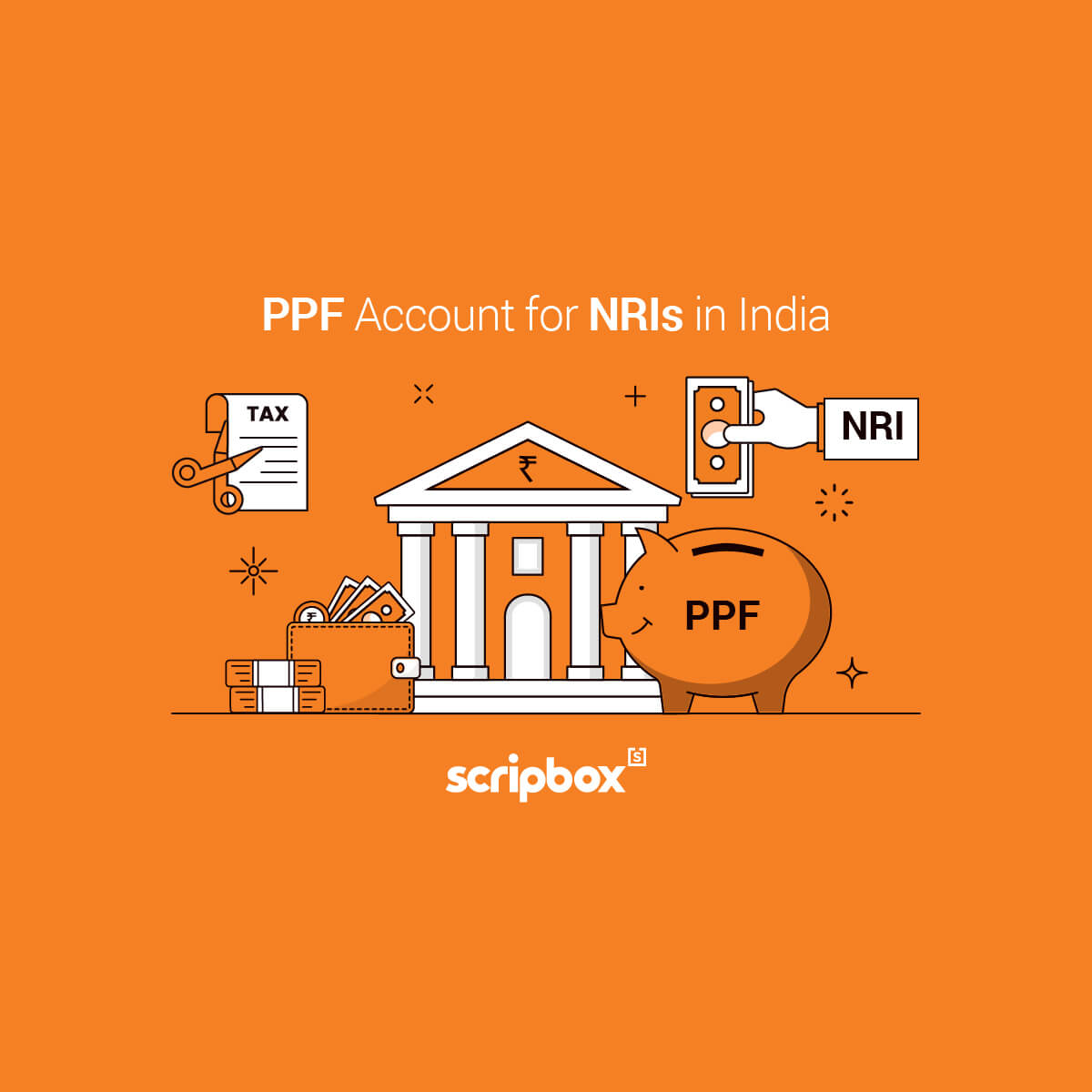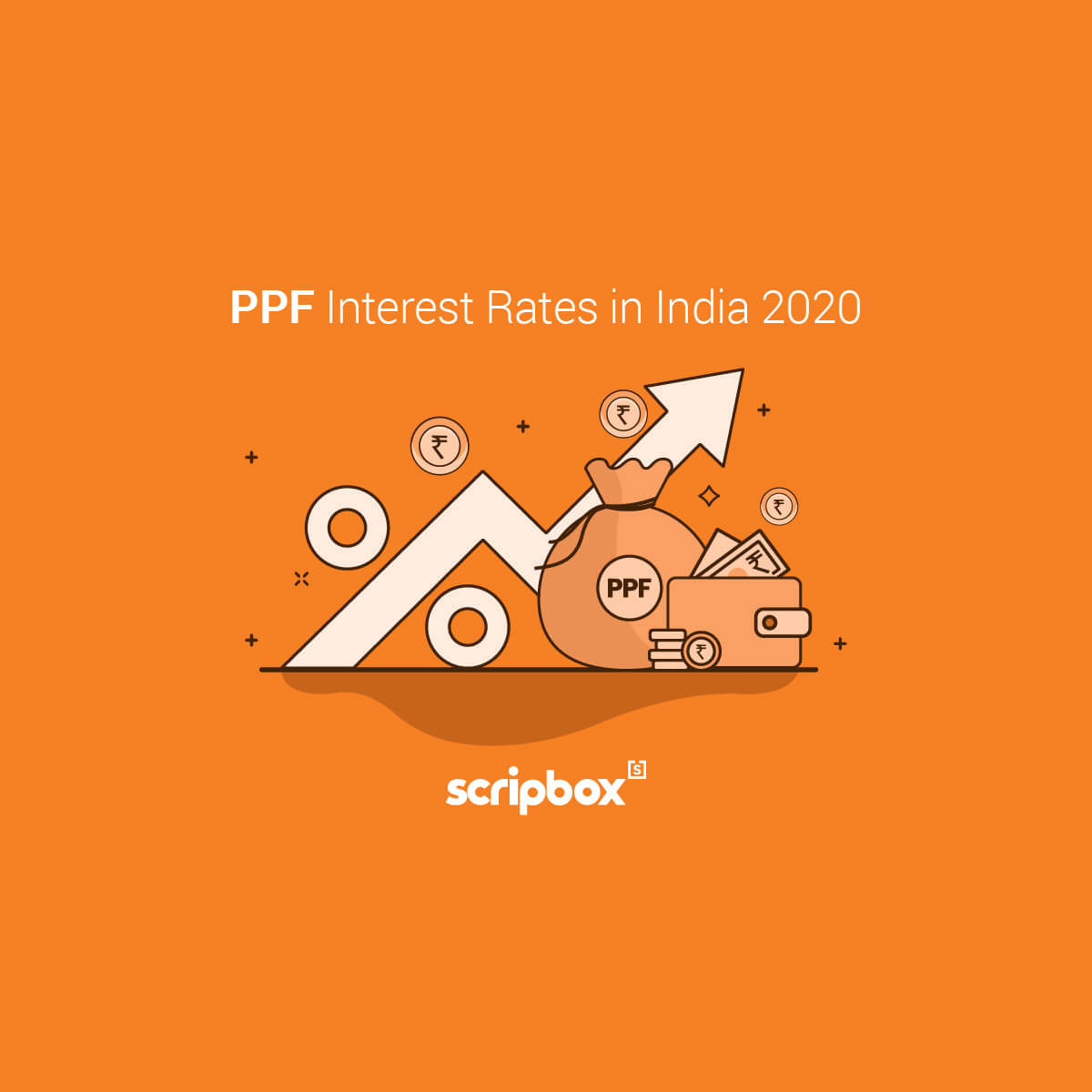The Public Provident Fund PPF was a scheme launched in 1968 by the National Savings Institute. It is one of the savings schemes offered by the post office. The government backs PPF; hence returns are guaranteed.
| Public Provident Fund (PPF) | Details |
| Interest Rate | 7.10% p.a. |
| Investment Amount | Rs. 500/- to Rs. 1,50,000/- |
| Maturity | 15 Year |
| Premature Closer | 1 % Penalty |
| Withdrawal | Every year from 7th year of investment |
| Taxability | Interest earned is not taxable under Section -10 of I.T.Act |
What is PPF Account?
The Public Provident Fund is a post office savings scheme launched by the National Savings Institute. However, some nationalised and private banks are authorised to accept PPF investments. The government backs it. Hence returns are guaranteed. The PPF Interest Rate for the current quarter is 7.10% p.a. (FY 2022-23). The interest payment is made on 31st March every year. However, the interest is calculated monthly on the minimum PPF balance between 5th and 30th of every month. Public Provident Fund comes with a lock-in of 15 years. One can further extend the scheme in blocks of 5 years.
All Indian citizens can invest in Public Provident Fund. However, HUFs and NRI are not eligible to open a PPF account.
PPF also allows investors to take a loan against their PPF investments. The loan facility is available between the third and fifth year. One can avail a loan online on the bank’s website.
Investors can only open one PPF account. Multiple PPF accounts are not allowed. Investors can invest in a lump sum or 12 multiple instalments. The minimum investment is INR 500, and the maximum is INR 1,50,000. However, some banks allow investors to open a PPF account with a minimum investment of INR 100. Investors need to invest at least a minimum of INR 500 in their PPF account to keep the account active. If they fail to do so, their account will be deactivated and investors will have to pay INR 50 as a penalty and INR 500 for that specific year to reactivate it.
Investment in Public Provident Fund up to INR 1,50,000 qualifies for tax deduction under Section 80C of the Income Tax Act. The returns from PPF Scheme are entirely exempt from tax.
Check Out National Saving Schemes
Eligibility To Open a PPF Account
To open a PPF account, the investor has to meet the following eligibility criteria:
- Has to be an Indian Citizen
- The investor can open only one account on their name. However, they can open another account on behalf of a minor.
- Hindu Undivided Families (HUFs) and Non-resident Indians (NRIs) cannot open a PPF account.
- Next, investors have to fill the application form and submit the documents along with the deposit amount to open the account.
How to open a PPF account?
You can open your PPF account either online or offline. Before applying for a PPF account make sure you check the eligibility criteria.
Open a PPF Account Online
To open a PPF account online through your savings account with a participating bank make sure your internet banking has been enabled for the same.
- Login to your internet or mobile banking using your login credentials.
- Go to ‘Open a PPF Account’ and select the option
- If you are opening the account for yourself then select the ‘self account’ option. However, if you are opening a new account on the behalf of a minor as a guardian then select the ‘Minor Account’ option.
- You will be asked to fill an application form. Enter the relevant details such as date of birth, PAN, name, address, aadhar number, estimated yearly investment amount, etc
- You can set up a standing instruction for the bank to debit the invested amount from your account.
- Verify the application through a OTP received on your registered mobile number or email address.
- On a successful creation of a PPf account, you will receive a confirmation email.
Open a PPF Account Offline
You can apply offline by visiting the nearest branch of the post office or the participating bank. To apply for a PPF account offline you need to submit the application form along with the relevant documentation.
Check Out PPF Online Payment
Documents Required for PPF Account
Following are the documents required while opening a PPF account:
- PPF Scheme Application form
- Identity Proof (Aadhaar Card, PAN Card, Passport, or Driver’s license, etc.)
- Address Proof (Aadhaar Card, Passport, etc.)
- Signature Proof
Upon submitting the documents, the investor has to deposit the investment amount towards the opening of the PPF account.
One can open a PPF account online only at the bank through internet banking. However, post offices do not have internet banking facilities to open a PPF account online.
What is the interest rate on PPF?
The Ministry of Finance announces PPF Scheme interest rates every quarter. The current interest rate on PPF is 7.10% p.a. (FY 2022-23). The Finance Ministry kept the rate unchanged from the last quarter. The interest payments are made on 31st March every year.
Prior to 2017, the PPF interest rate announcements were every year or as per requirement. However, since April 2017, the interest rates are announced every quarter.
The interest amount is determined based on the PPF account balance. The interest on PPF Scheme is calculated based on the minimum balance in an investor’s account between the 5th day and the last of every month.
Therefore, it is better to make PPF deposits on or before the 5th of the particular month. This will help the investor to earn interest on the deposit amount for the entire month.
Investments into a PPF account can be either a lump sum or in a maximum of 12 instalments in a year.
Features of a PPF account
Tenure
The minimum tenure for a PPF account is 15 years. However, the investor has an option to extend the duration by a block of 5 years. The extension doesn’t require any additional investments.
Eligibility
Indian Citizens can open a PPF account. However, Non-Resident Indians (NRIs) and Hindu Undivided Families (HUFs) cannot open a PPF account.
Number of Accounts
Each individual can have only one PPF account. However, they can open another account on behalf of a minor.
Minimum and maximum investment amount
A PPF account can be opened with INR 100. Also, in a year, the minimum investment amount is INR 500. On the other hand, the maximum investment per annum is INR 1,50,000. For investments above INR 1,50,000, the investors don’t get any interest.
Deposit frequency
The deposit frequency has to be either once a year or in a maximum of 12 instalments in a year. It is mandatory to make at least one deposit into the PPF account for 15 years to keep the account active.
Mode of deposit
Deposits into PPF Scheme can be made through online, demand draft, cheque or cash.
Risk
The Government of India backs the Public Provident Fund PPF. Therefore, it is one of the safest investment options available to individuals. PPF offers guaranteed and risk-free returns. It also offers capital protection. Hence the risk factor with PPF Scheme investments is minimal.
Joint Account
Individuals can open only one account on their name. PPF Scheme doesn’t allow opening a joint account.
Nomination
The investor has an option to nominate a nominee for their account. They can do it either at the time of opening the PPF account or subsequently.
Loan
Investors can avail a loan against their PPF account. However, they can avail the loan between the third and the fifth year. The loan amount cannot exceed 25% of the investments made at the end of the second financial year. One can avail a loan online directly at the bank’s website.
Additionally, investors can also avail a second loan after the sixth financial year. However, the first loan taken against the PPF account has to be paid entirely before getting the second loan.
Best Bank to open PPF Account in India
The following is a list of public and private banks offering PPF accounts in India on behalf of the Post Office of India.
- State Bank of India
- State Bank of Patiala
- State Bank of Bikaner & Jaipur
- State Bank of Travancore
- State Bank of Hyderabad
- State Bank of Mysore
- Bank of Baroda
- Central Bank of India
- Bank of India
- Union Bank of India
- IDBI Bank
- Vijaya Bank
- Allahabad Bank
- Oriental Bank of Commerce
- Bank of Maharashtra
- Indian Overseas Bank
- Punjab National Bank
- United Bank of India
- Corporation Bank
- Indian Bank
- ICICI Bank
- Canara Bank
- Dena Bank
- Axis Bank
- HDFC Bank
- Kotak Bank
Tax Implications on investment and interest
Public Provident Fund investments fall under the Exempt – Exempt – Exempt (EEE) category. This means that the investments, interest and redemptions are all tax exempted. Investments up to INR 1,50,000 per annum qualify for tax deductions under Section 80C of the Income Tax Act. Investors, while filing their income tax returns can declare their PPF investments to avail tax benefit.
The PPF interest payments are yearly on 31st March. The interest earned on PPF account is also completely tax exempt. Also, the maturity amount at the end of 15 years is completely tax free.
Therefore, PPF is a very good investment option for investors looking to save their Income Tax. The PPF account also provides capital protection along with guaranteed and risk-free returns.
One can use Scripbox’s Income Tax Calculator to determine their taxable income while filing their income tax returns.
PPF Withdrawal
PPF scheme matures after 15 years. At the end of this tenure, investors have three options. They can opt for complete withdrawal and withdraw their entire investment. It is credited to the saving account. Or they can choose to extend their scheme without contributing to the PPF account. In this case, the interest will continue to be accrued until the account is closed. Investors can also opt for account extension with contributions. This extension can be in the block of five years. There is no limit on the number of times one can extend their PPF account in their lifetime.
Investors can partially withdraw their investments in PPF before maturity as well. However, there are specific rules on partial withdrawals. Premature withdrawals are possible only after completion of 5 years from the end of the year. However, the investor cannot withdraw the entire amount. There is a cap on the amount that can be withdrawn. Only 50% of the PPF balance at the end of 4th year or 50% at the balance of the preceding year, whichever is lower can be withdrawn. The same is credited to the saving account.
Investors can also prematurely close their PPF account. However, only under certain conditions, this is allowed, and they are:
- Premature closure is possible only after five years from the year of account opening.
- Premature closure is allowed only when the account holder, his/her spouse or dependent children are suffering from life-treating disease. They will have to submit the necessary documents to prove the same.
- If the account holder needs money for higher education, then the account can be closed. However, he/she needs to submit the relevant documents.
- If the account holder is changing his/her residency status, the account can be prematurely closed.
All premature closures have a penalty of 1% interest.
Procedure for PPF withdrawal
To withdraw their investments from PPF accounts, in part or in full, investors need to submit Form C. They will have to submit the form to the bank or the branch where they have their account. Form C has three sections. The basic details section, office use section and acknowledgement section.
Basic details section
This section has to be filled by the investor. It includes following the details:
- PPF Account number
- The total balance in PPF account
- Amount to be withdrawn
- Date of last withdrawal
- The number of years since the first year of investment
Office use section
This section has to be filled only by the withdrawal team of PPF of any branch. The investor need not worry about filling this section. It includes the following:
- Date of initial investment
- Amount in PPF account
- Date of last withdrawal
- The amount available of withdrawal
- The sanctioned withdrawal amount
- The date and signature of the officer
Acknowledgement Section
This section includes an acknowledgement which has to be signed by the investors mentioning the following details
- A bank account number along with other details like IFSC code and branch name.
- Name of the account holder
- Revenue stamp
Investors, along with the above form, have to enclose the PPF passbook. Also, all withdrawals, whether done in full or partial, prematurely or after the entire term, are free from tax. Investors need not pay tax on any withdrawals. However, for premature closure, the investors have to pay a penalty of 1%.
PPF vs Mutual Funds
Public Provident Fund is a government savings scheme with fixed returns. However, there are other investment options like mutual funds which also qualify for tax saving. Additionally, they have better liquidity and a higher potential to give significant returns.
Mutual fund scheme is an investment vehicle that invests across asset classes (equity and debt). They pool money from investors and invest in equity and debt securities strategically. Mutual funds have given market-beating returns and are considered as one of the investment alternatives.
In mutual funds, only Equity Linked Savings Schemes (ELSS) qualify for tax saving under Section 80C of the Income Tax Act. Mutual funds are majorly of 3 types based on the asset class. They are equity mutual funds, debt mutual funds and hybrid mutual funds. Each of these has multiple categories and differ based on the investment objective.
Following are the significant differences between mutual funds and PPF.
| Basis of difference | PPF | Mutual Funds |
| Eligibility | Indian citizens | Indian citizens above age 18, NRI and PIOs, can invest in a mutual fund scheme |
| Minimum and Maximum Investment | INR 500 and INR 1,50,000 | INR 100 and there is no cap on maximum investment. |
| Returns | The PPF rate is 7.1% (fixed, revised quarterly) | Market linked returns |
| Safety | Fixed returns, backed by the government. | Moderate to high market-linked returns. |
| Lock-in Period | 15 years | No lock-in, except for ELSS and closed-ended funds. |
| Taxation | Investment, returns and maturity amount are completely tax free. | Only investment in ELSS funds is tax-free. The gains from mutual funds are taxable based on the holding period of the investment. |
You may also like to read about the NSC vs PPF
Which is a better option: PPF or FD?
Both Public Provident Fund and FD guarantee returns in the form of interest. However, FDs have tenures ranging from 7 days to 10 years. Investors can pick a tenure suitable to them. In PPF, the tenure is fixed at 15 years. The returns from PPF are entirely tax free.
In contrast, the interest income for fixed deposits is taxed and is subject to TDS. The bank fixes the FD interest rate. FD interest rates differs from bank to bank. Moreover, the FD rates for senior citizens are higher than regular citizens. One can take a loan against their PPF account. However, only 25% can be taken as a loan between 3rd and 5th year. One can also take a loan against FD and get up to 90% of their deposit amount. The interest on the loan is 1-2 percentage points above the FD rates.
Loans such as loan against property (home loan), business loan, an education loan, etc., can be taken against an FD. The loan interest rate varies based on the bank and type of loan.
One can calculate their loan EMI using Scripbox’s online loan EMI calculator. The loan EMI calculator works as a home loan calculator, personal loan EMI calculator and car loan EMI calculator. The investor can also use this EMI calculator in multiple scenarios by changing the car loan interest rate, personal loan interest rate, and home loan interest rate.
Is LIC better than Public Provident Fund?
The distinction between investment and insurance is often misunderstood. Insurance protects against risk, while investment ensures a stable future. It is important for any investor to be in good financial shape. An emergency fund for unforeseen costs, insurance for security against unfortunate accidents, and savings for a safe future are all essential for good financial health.
As a result, if an investor has dependents that rely on their income, they must have insurance. There are several different types of insurance schemes available, including term insurance, ULIPs, and endowment plans. However, it is advised to purchase a term insurance policy and invest in a PPF.
It combines the benefits of insurance and investment security in the most cost-effective way possible. Therefore the question shouldn’t be which is LIC better than PPF? Instead, it should be which term policy goes well with PPF.
There are several insurance plans that provide investment options, such as ULIPs. However, these plans have a high expense ratio and hidden charges. Therefore, it is advisable for individuals to differentiate their investment and insurance needs. Purchasing a term policy while investing in PPF is the best strategy.
ALSO READ
Frequently Asked Questions
Yes, you can withdraw PPF Scheme investments after 5 years of account opening. However, these premature withdrawals come with a 1% penalty. Premature withdrawals are allowed only under special conditions. When the account holder, their spouse or dependent children are suffering from a life-threatening disease. For higher education, and if there is a change in the account holder’s residency status, the account can be prematurely closed. Furthermore, necessary documents have to be submitted as a proof.
An investor shall receive the maturity amount in the PPF account. The maturity amount is the principal amount invested plus the interest earned during the 15 years. To know the expected amount after 15 years in advance, you can use the PPF calculator, just enter the yearly investment amount and duration of the investment. The calculator computes the wealth gained and maturity amount.
A PPF account is a safer investment option for conservative investors who wish to invest in a safer investment option. Since PPF is backed by the Central Government of India it is considered safer than other investment options. Moreover, PPF Scheme qualifies for a tax deduction of up to rs 1.5 lakhs under section 80C of the Income Tax Act, 1961. You can invest anywhere in the range of Rs 500 to Rs 1,50,000 every financial year.
A PPF account is managed by the Department of Post of India. The interest rate is monitored by the Ministry of Finance. The regulations, rules, conditions are managed solely by the Post Office. Many banks have partnered with the Post office to provide the services related to PPF Scheme to its customers. Hence, the best bank for a PPF account is the one with which you hold a savings bank account and an internet or mobile banking facility.
To keep a Public Provident Fund account active, one has to invest at least a minimum of INR 500 in a financial year. If they fail to do so, their account will be deactivated. To reactivate the account, one will have to visit the branch with whom the PPF account is and submit a written request. Along with that, they will have to pay INR 50 as a penalty for each year they didn’t invest in PPF. Additionally, they will also have to invest a minimum of INR 500 for each year they didn’t invest.
To activate an inactive account, the investor has to pay the minimum deposit amount of INR 500 for each year the account was inactive. Additionally, another INR 500 for the year they are activating the account.
No. It is not mandatory to withdraw PPF investments after 15 years. The investor has an option to extend their investments as long as they wish. However, an extension is done for a block period of 5 years. Also, an extension can be done either by doing fresh investments or without any further investments.
The maximum investment limit for a year in PPF is INR 1,50,000. This is also the maximum amount on which one can avail a tax benefit. Interest is paid only on INR 1,50,000 in a year. All additional investments do not earn interest. Therefore, for all purposes, interest is calculated on the maximum annual investment limit of INR 1,50,000.
No. An individual can have only one PPF account. However, they can open another account on behalf of a minor.
If an investor fails to make at least INR 500 per annum towards their PPF account, the account gets suspended. In other words, the account becomes inactive. During the inactive status of the PPF account, it doesn’t earn any interest despite having balance. Upon reviving the account, the interest will then be calculated on the balance held at the time of revival.
Related Articles
- Confused if your portfolio is performing right enough to meet your goals?
- How long have you been investing in mutual funds?
- What is your current portfolio size?
- What is your approximate annual household income?
- Your profile does not qualify for a call with a Financial Expert.
- What is PPF Account?
- Eligibility To Open a PPF Account
- How to open a PPF account?
- Documents Required for PPF Account
- What is the interest rate on PPF?
- Features of a PPF account
- Best Bank to open PPF Account in India
- Tax Implications on investment and interest
- PPF Withdrawal
- Procedure for PPF withdrawal
- PPF vs Mutual Funds
- Which is a better option: PPF or FD?
- Is LIC better than Public Provident Fund?
- Frequently Asked Questions




























Show comments